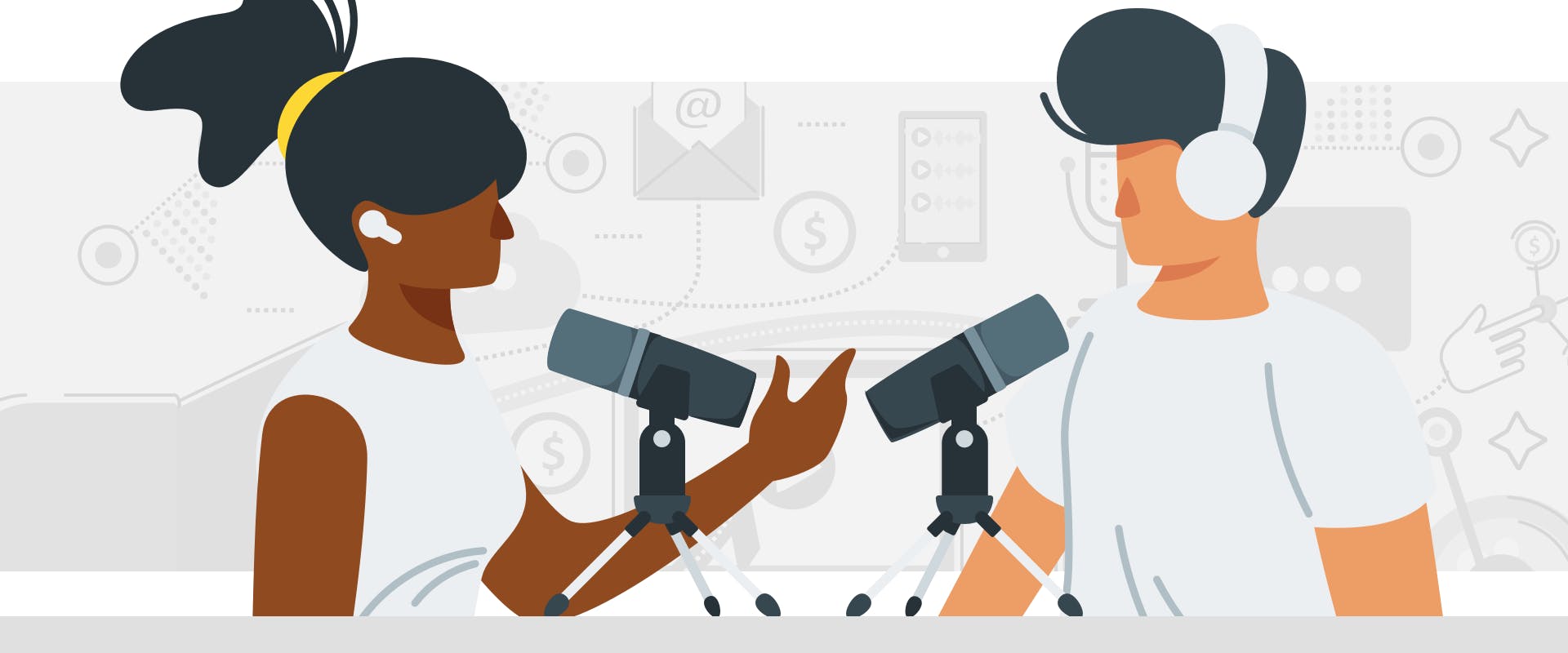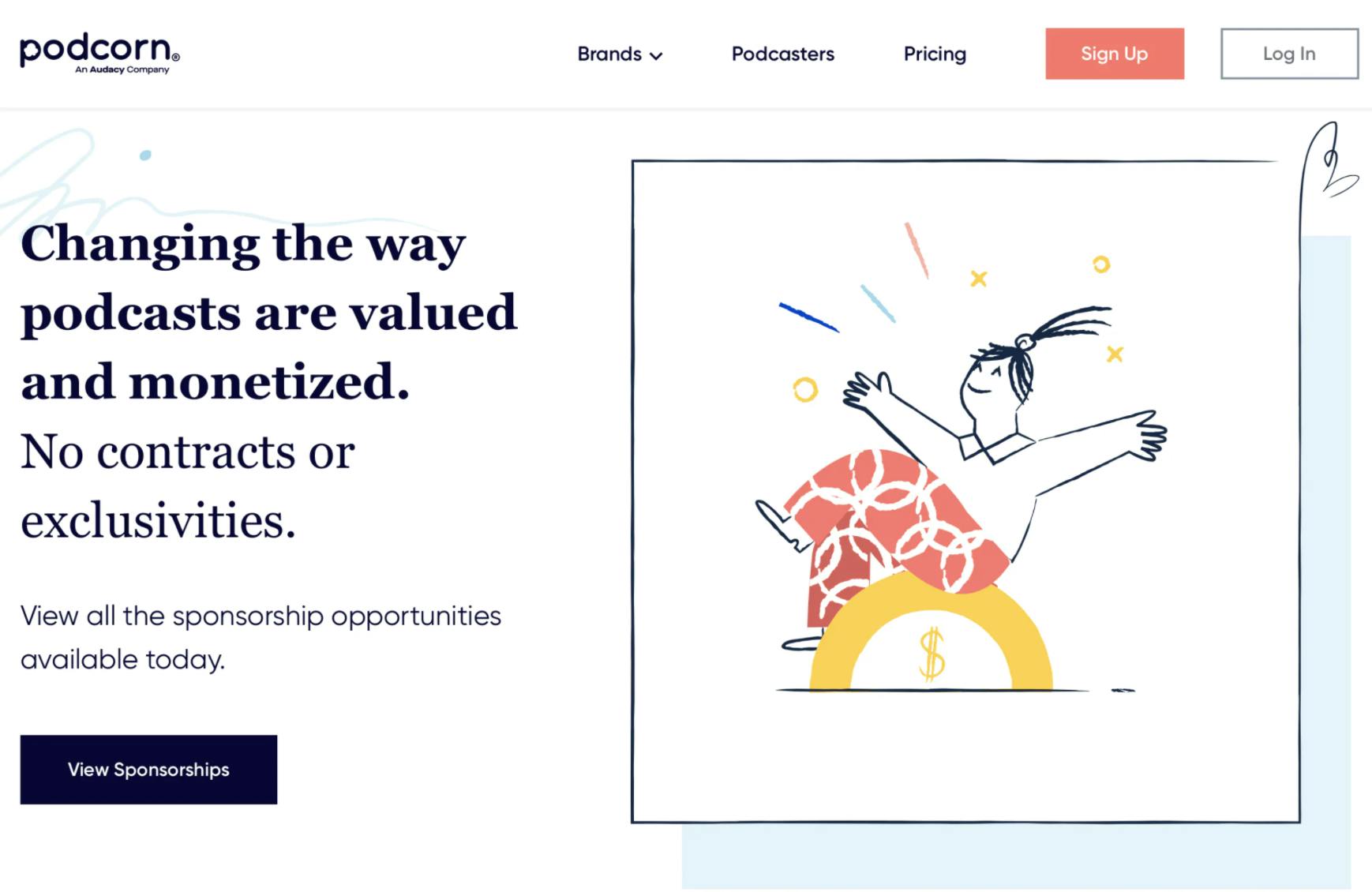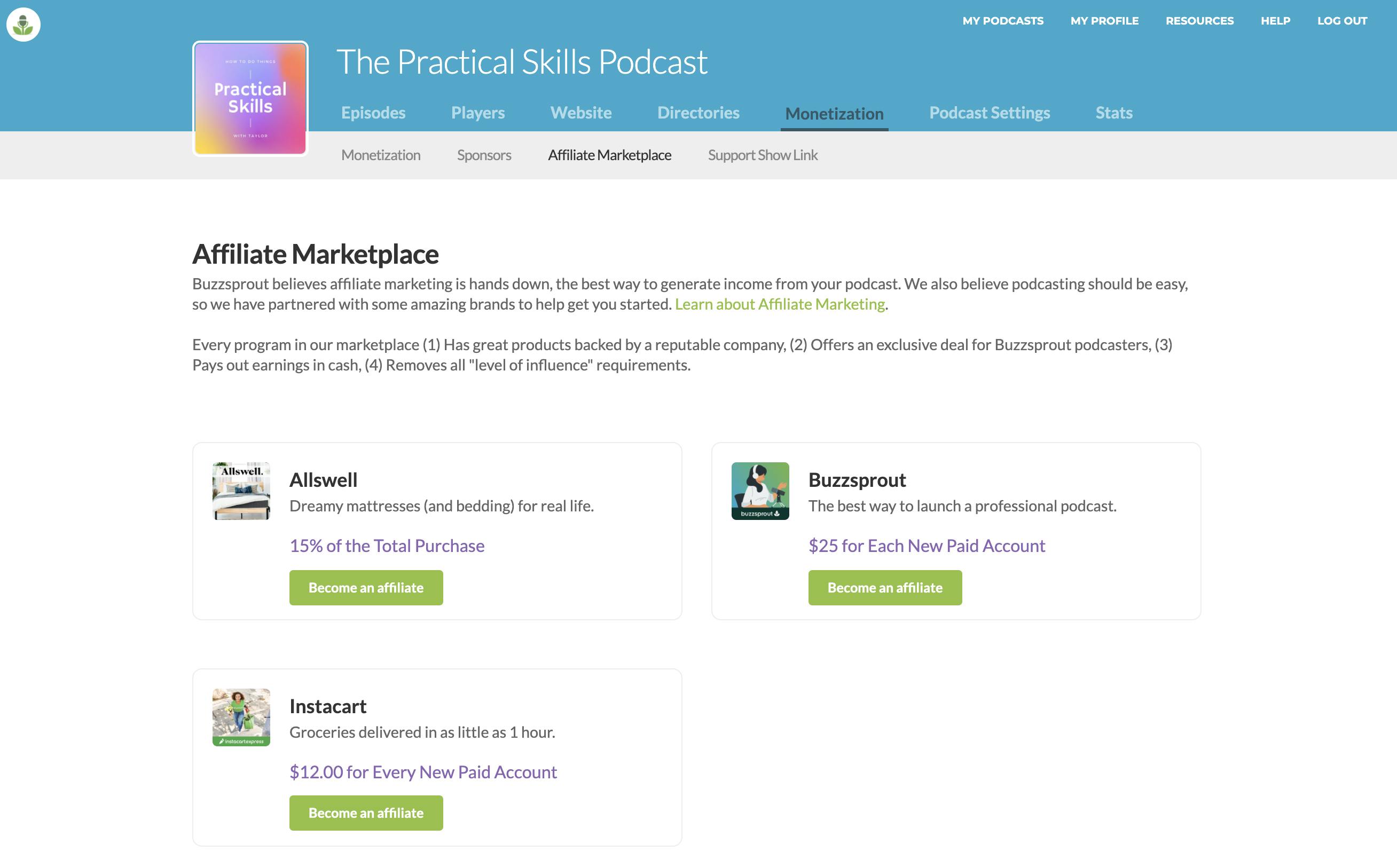
How to Get Podcast Sponsors [2022]
Podcast sponsorships are a powerful advertising tool for brands and an effective monetization strategy for podcasters.
You have the freedom to choose which brands you endorse. Partnering with brands you genuinely love lets you monetize your podcast while maintaining an authentic connection with listeners.
This guide explains how podcast sponsorships work and everything you need to know to partner with your first sponsor.
JUMP TO A SECTION:
How many downloads do you need to start?
Download requirements vary based on the brand you're pitching to and the ad model they use.
Some ad models don't work unless you have an audience of thousands, and others can work if you only have a couple hundred engaged listeners.
Ask yourself these questions before seeking out brand partners:
- Do I consistently get at least 200 downloads per episode?
- Have I worked to build trust with my audience?
- What products or services would add value to my listeners?
PRO TIP
You can grow your listenership by running a podcast promo with Buzzsprout Ads. Podcast promos are more effective than traditional ads since they target the right audience for your show.
When you create a Buzzsprout promo you:
- target people who already listen to podcasts
- find listeners already interested in your podcast's topic
- reach 5,000 listeners for just $100
4 Ways to find podcast sponsors
The method you use to pitch to brands largely depends on the size of your audience. Here are the four main ways to reach out to potential sponsors.
1. Pitch directly to brands
Best for: Podcasters who don't want to split the revenue with a network.
Network with brands or small businesses and pitch your idea to them directly, whether in person or online.
This method helps you stand out from the competition, reach a mutually beneficial deal, avoid network splits, and gives you complete control over the sponsors you choose.
It's hard work to pitch to brands yourself and can take time, an understanding of the various ad models, and solid negotiation skills.
2. Join a podcast network
Best for: Podcasters with 5,000-10,000+ downloads per episode
When you join a podcast network (Midroll, Acast, etc.), they do all the work of finding sponsors for you so you can focus on creating content.
Of course, networks want a cut of your ad revenue (usually around 30%), so you won't make anything significant unless you have a large audience.
3. Use a podcast ad marketplace
Best for: Can work for all podcasters depending on the type of marketplace
Podcast ad marketplaces connect brands looking to buy ad space with podcasters looking to sell it.
Brands can sift through thousands of shows to find one that feels like a fit and reach out to the creator to strike a deal.
Marketplaces earn anywhere from 10% to 30% commission off your sales, and the competition can be high. Here are some ad marketplaces to consider.
Podcorn
Podcorn is an ad marketplace that uses the affiliate model, making it a great option for all podcasters regardless of the number of downloads.
Using an affiliate marketplace is a great way to start monetizing in the early stages of your podcast.

Their self-service platform for podcast sponsorships helps match independent creators with affiliates they can authentically endorse.
Podcorn also lets you keep more of your profits and only takes a 10% cut of your ad revenue.
Buzzsprout Affiliate Marketplace
If you host your podcast with Buzzsprout, you can use Buzzsprout's Affiliate Marketplace to connect with pre-vetted brands regardless of how many listeners you have.

Any Buzzsprout podcaster can become an affiliate with these brands, get paid in cash, and keep 100% of their earnings.
Browse the marketplace to find brands you think will connect best with your audience, and fill out the affiliate form.
You should get a response within a couple of days.
Gumball
Gumball's marketplace works similarly to Podcorn but uses a CPM model and takes a higher cut of the profits.
Brands set filters to find podcasts they want to buy host-read ad space from. The marketplace takes 20% of the earnings.
AdvertiseCast's Podcast Advertising Marketplace
AdvertiseCast is a podcast network with over 1500 shows in its inventory.
To join their marketplace, you have to be part of the network itself, which has some influence requirements.
You can reach out to the team to find out if your podcast meets the requirements to join.
Acast
Acast is a podcast network and ad marketplace. Brands can collaborate with creators on the network to create unique ads that reach their target audience.
Podcasters read the ads themselves and place them wherever they want within the episode. Anchor's CPM rate is $15 on a per-episode basis.
Anchor Sponsorships
If you host your podcast with Anchor, you have access to Anchor Sponsorships to help match you with appropriate sponsors.
You can add sponsored messages to your back catalog, so you'll get paid anytime you get 1,000 listens, even on older episodes.
BuySellAds
This site sells ad spots to brands across multiple channels, including host-read podcast ads.
Reach out to info@buysellads.com for the requirements to join.
Podbean Ads Marketplace
With Podbean's marketplace, brands can run pre-recorded ads on podcasts on podcasts big or small.
Ads only play on podcasts hosted with Podbean.
4. Use affiliate marketing
Best for: Any podcaster; best option for those with a small audience
In affiliate marketing, you get paid a cut for each sale made via a unique link instead of getting paid per 1,000 listens.
There are no download requirements to start affiliate marketing, and it's one of the easiest ways to get your first sponsor.
Some of the top affiliates for podcasters are:
Types of podcast sponsorship ad models
It's important to know what you're getting into before striking a deal with a brand. Here are the three primary metrics in podcast advertising.
CPM model
Best for: Podcasters with 10,000+ listeners
CPM stands for "cost per mille" and refers to how much money an advertiser pays a podcaster for every 1000 listens the ad gets.
Most podcast CPM rates fall between $20–$25, so if you had 5,000 downloads per episode, you'd get $100-$125.
This ad model is lucrative for popular podcasts but doesn't work for most independent podcasters.
Affiliate model (CPA)
Best for: Independent podcasters, new podcasters
CPA stands for "cost per acquisition," meaning podcasters get compensated for every sale made with an affiliate link.
The affiliate model works well for podcasters with a small, engaged audience and larger podcasts.
Tip: To see if this model is profitable for you, assume 1% of your listeners act on your ad at a commission rate of 15% of a $50 product or service.
Value-based model
Best for: Any podcaster with a highly engaged following
In this ad model, advertisers pay you a flat rate to promote their product or service on your podcast.
If 200 people listen to your podcast, you could potentially net $500 for a single product mention compared to $4 with a CPM rate of $20.
Providing value to brands is the trick for this method. You may not have a ton of listeners, but brands will take notice if you have a few hundred of the right kind.
Best practices
Finding a sponsorship that is worth your time takes some work on the front end. Here are a few ways you can optimize your chances of success.
Have a quality pitch
Figure out why a brand should want to advertise on your podcast.
You can include a media kit in your pitch email that includes things like:
- A description of your podcast
- Your audience demographics
- A slide deck of promotional info and clips
- An explanation of why podcast ads are effective
- Your contact info
If you don't hear back after the first email after a week, consider sending a friendly follow-up email.
Tip: Learn more about your listener demographics through your podcast hosting platform and specific directories like Spotify or Apple Podcasts.
Set your rate
The current industry standards for CPM rates are:
- $18 per 1,000 listens for a 30-second pre-roll ad
- $25 per 1,000 listens for a 60-second mid-roll ad spot
Post-roll ads are less common among advertisers because there tends to be less engagement at the tail end of podcast episodes.
Mid-roll ads are the most expensive because listener engagement tends to be the highest mid-episode.
Don't exceed 10% ad time per episode
Reading ads for more than 10% of your podcast's total episode length can backfire. Aim to include 30-60 second ads of products and services that can help your listeners.
Improve your marketing
Sometimes a good deal with a brand comes just from having a consistent marketing strategy.
Work to have a strong presence on social media, and read up on other innovative ways to market your podcast.
Alban Brooke
Alban Brooke is the Head of Marketing at Buzzsprout and the co-host of Buzzcast. Have any questions about this guide? Reach out on Twitter.
FAQ
How do I get sponsors for my podcast?
You can find sponsorships by joining a podcast network, pitching directly to brands, using a podcast ad marketplace, or partnering with affiliate programs.
How much do sponsors pay on podcasts?
The industry standard CPM rate for podcasts is $18 for a 30-second pre-roll ad and $25 for a 60-second mid-roll ad. Affiliate sponsors usually pay podcasters a commission of $15-$30 for each sale made.
How many downloads do podcast sponsors require?
Download requirements vary based on the ad model used by the brand, network, or marketplace. However, it is not profitable to seek a sponsorship deal unless you consistently have at least 200 downloads per episode.
